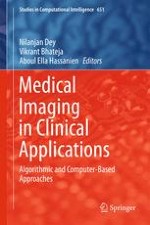2016 | OriginalPaper | Buchkapitel
Advances in Soft Computing Approaches for Gene Prediction: A Bioinformatics Approach
verfasst von : Minu Kesheri, Rajeshwar P. Sinha, Swarna Kanchan
Erschienen in: Medical Imaging in Clinical Applications
Aktivieren Sie unsere intelligente Suche, um passende Fachinhalte oder Patente zu finden.
Wählen Sie Textabschnitte aus um mit Künstlicher Intelligenz passenden Patente zu finden. powered by
Markieren Sie Textabschnitte, um KI-gestützt weitere passende Inhalte zu finden. powered by
